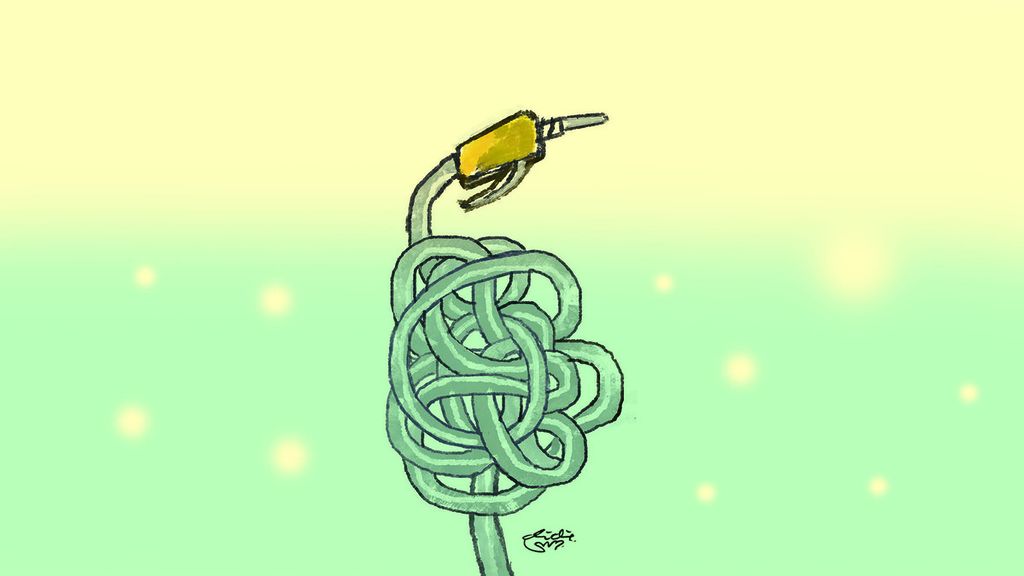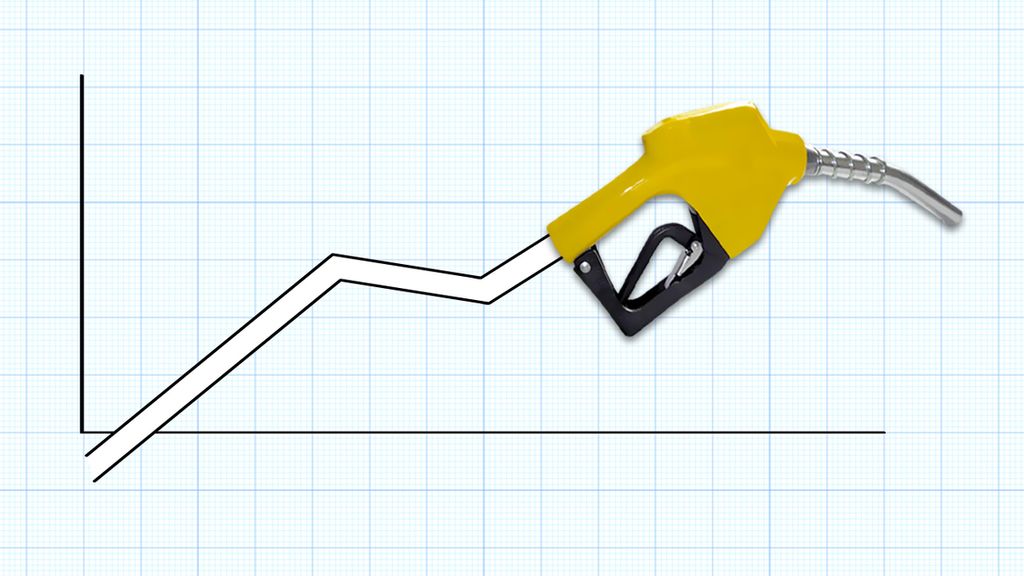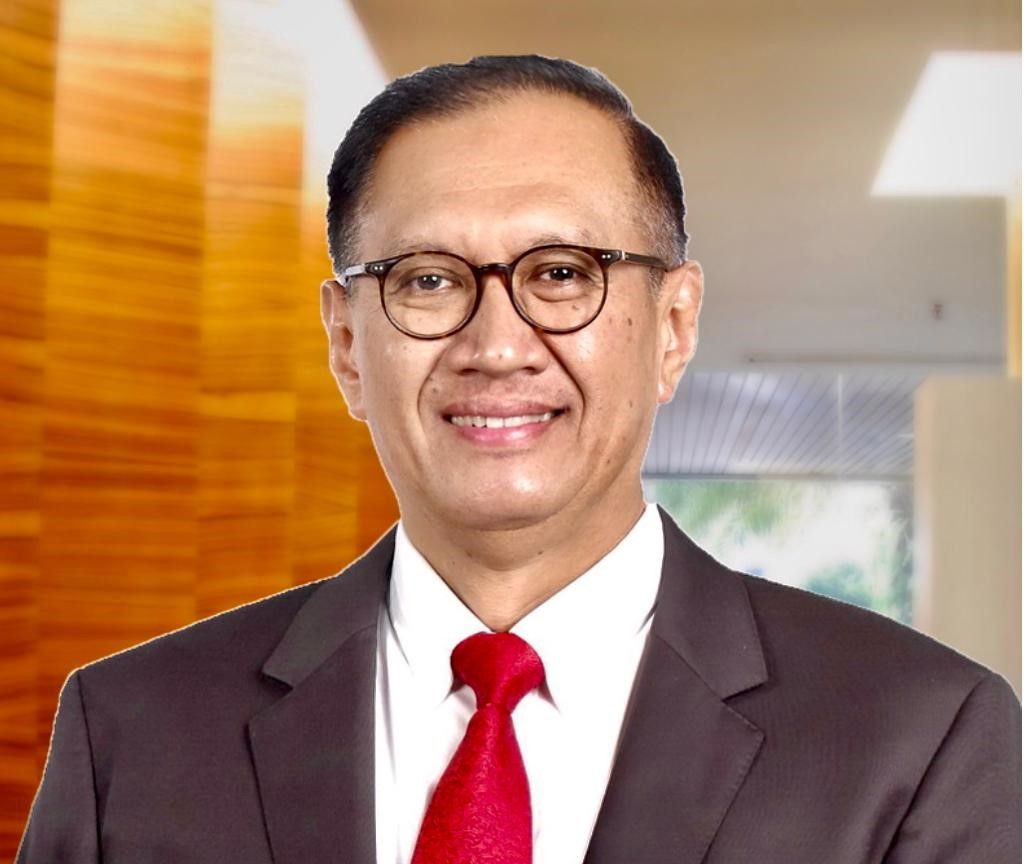Fuel Price Hike and Social Protection
The success of managing the reduction of fuel subsidies cannot be separated from effective public communication. Delivering the right message to all parties, including those who will be affected, must continue.

The government has experience in managing the reduction of energy subsidies, particularly fuel subsidies, in an orderly and unhurried manner.
Since 2005, the government has adjusted fuel prices several times and made it an opportunity to organize a better social protection scheme.
Amidst the discourse to increase the price of fuel, it is better if we look back at the experience of the government in adjusting fuel prices.
Program evolution
In early 2005, the administration of Susilo Bambang Yudhoyono-Jusuf Kalla (SBY-JK) faced the challenge of rising world oil prices. Based on previous experience that increasing fuel prices always led to protests, the government planned to provide direct compensation to the poor and vulnerable households (RT).
The problem at that time was the unavailability of data of poor and vulnerable households for the distribution of compensation. Therefore, in March 2005 the government adjusted fuel prices by 29 percent and did not increase the price of kerosene, which is mostly consumed by the poor and the vulnerable.
Immediately after the March 2005 fuel price hike, the government asked Statistics Indonesia (BPS) to collect data on poor and vulnerable households. In less than six months, BPS managed to complete data collection of 19.1 million poor households with their names and addresses. Enumeration was carried out using a simple questionnaire followed by a ranking process.
With the availability of this household/family list, the government provided compensation in the form of direct cash assistance (BLT) of Rp 100,000 per month for one year. Because it was possible to provide compensation, in October 2005 the government increased fuel prices by 114 percent, including the increase of kerosene almost threefold. The distribution of BLT to 19.1 million households is the largest in the world and is the beginning of the implementation of a targeted social assistance program.
Also read:
> Economic Resilience and Fuel Subsidy
> Fuel Subsidies Mostly Enjoyed by the Rich
The SBY-Boediono administration faced the challenge of rising world oil prices in 2013. Improvements in social protection programs became more coordinated because previously, in 2010, the government issued Presidential Regulation No. 15/2010 concerning the acceleration of poverty reduction. This Presidential decree mandates the formation of a National Team for the Acceleration of Poverty Reduction (TNP2K), which is chaired by the Vice President and consists of relevant ministers.
In addition to improving coordination, the TNP2K's main task is improving the national targeting system for social protection and improving the implementation of poverty reduction programs, including social protection.
The first task of the TNP2K was, together with the BPS, to update the household data from the 2005 survey by improving the enumeration and ranking methodologies. The list of the poor and vulnerable households is summarized in an integrated social protection database (BDT), which contains a list and information of 40 percent of households with the lowest socioeconomic conditions.
As part of the distribution of compensation for the 2013 fuel price hike, the government introduced Social Protection Cards (KPS) which were distributed to 15.5 million households or 25 percent of households with the lowest socioeconomic conditions. This KPS can be used to collect temporary direct assistance from the community at the post office for Rp 150,000 per household for four months.

In addition, the KPS can also be used to obtain Raskin (rice for the poor) assistance for poor students (BSM), and assistance for the National Health Insurance (JKN). The KPS is for poor households to access various social protection programs.
In his campaign promise, President Joko “Jokowi” Widodo is determined to make infrastructure development a top priority. After winning the 2014 presidential election, Jokowi formed a transition team with the main task of formulating steps to transfer subsidies as well as improving the social protection program. At the time, energy subsidies reached Rp 350 trillion (US$23.6 billion), while the infrastructure budget was Rp 155 trillion and the health budget Rp 38 trillion. Vice President Boediono ordered the TNP2K secretariat to fully assist this transition team.
After many meetings that were sometimes full of debate, the TNP2K secretariat suggested several options for providing social assistance. The chair of the transition team communicated the proposal to the President. After receiving several reports regarding the grand strategy for fuel subsidies, the President made a decision and gave the following directions.
First, the narrative built in the context of reducing fuel subsidies is to shift consumptive subsidies into productive subsidies. Second, improve the welfare of the underprivileged. Third, protect and empower underprivileged communities through productive savings, the continuity of children's education, health insurance, as well as business and work opportunities. Fourth, use technology to reach the wealthy.
Also read:
> Direction of Fuel Subsidies and Energy Transition Trend
> Commitment to Renewable Energy
The big message to be conveyed is to reduce fuel subsidies to improve the dignity of the underprivileged families by empowering and protecting, not just as charity.
The President's directive is carried out through four programs, as well as the launch of the three famous Jokowi kartu sakti (magic cards). First, the Prosperous Family Savings using the
Prosperous Family Card (KKS) which is a banking service card. Second, Assistance for Underprivileged Students using the Smart Indonesia Card. Third, the National Health Insurance (JKN) using the Healthy Indonesia Card.
Fourth, the creation of productive family activities through the provision of assistance and assistance for families to carry out productive activities.
All programs are run with the principle of targeting 15.5 million families, holders of the KPS, whose data is taken from the Unified Database (BDT). President Jokowi’s idea about using the kartu sakti is a milestone to provide comprehensive social security to the poor and the vulnerable. The transfer of subsidies in the Jokowi-JK era succeeded in diverting consumptive subsidies for infrastructure development spread throughout the country as well as organizing social protection programs. Diversions are done elegantly and without fuss.
The Jokowi-JK administration is also experienced in reducing electricity subsidies in 2007. The electricity subsidy will only be given to those in the social protection database. The President gave a directive that the electricity subsidy reform was only done for 900 VA customers, while for the 450 VA subsidy no changes were made because the majority of the household customers were poor and vulnerable. This improvement was carried out without any turmoil and the resulting savings was Rp 22 trillion.

Lightening the impact
The President has repeatedly stated that the government is not anti-subsidy, but that subsidies must be properly targeted and given to those in need. In fact, 80 percent of the subsidy for the low quality fuel Pertalite is enjoyed by those who can afford it, while the poor and vulnerable households only enjoy 20 percent of the subsidy. This is not fair. It is time for the entire energy subsidy amounting to Rp 502 trillion be allocated to the poor and vulnerable. Currently, the government is in a much better position to divert subsidies to poor and vulnerable households.
Fuel price adjustments do not need to be done all at once. Based on simulations, a 30-35 percent increase in fuel prices only requires around Rp 100,000/month/family to keep the welfare level of poor and vulnerable households from falling. The potential savings in the state budget is Rp 125 trillion per year. If it is desired to provide assistance only to the bottom 25 percent of RTs or 15.5 million RTs, Rp 1.5 trillion per month is required or Rp 9 trillion if given for six months, far less than the savings obtained.
To complement existing social protection, much can be done. One of which is providing compensation to the elderly. The highest poverty rate is found in the elderly group. The poverty rate for those aged 70-79 years is 14 percent, while those aged 80 years and over reach 17 percent (BPS, 2021).
Also read:
> Fiscal Aspects of Social Protection Programs
In addition, the expansion of compensation to persons with disabilities can be considered. It is estimated that there are 25 million people with disabilities, some of whom have been provided with compensation through the Family Hope Program. Expanding the coverage of benefits to the elderly and people with disabilities has the potential to reduce poverty levels.
In the long term, the provision of social protection needs to be done through official agencies such as BPJS Health and BPJS Employment. Indonesia needs to immediately organize social protection toward lifelong social protection for all. In order to reduce the poverty level of the elderly, it is necessary to provide convenience in participating in old-age and pension programs for all groups of workers. Old-age security programs and formal pensions need to be introduced at an early age and carried out on a contribution basis.
Right on-target and public communication
The key factor for the success of diverting fuel subsidies to the poor and vulnerable households is target accuracy. According to the BPS, only 57.5 percent of households in the first decile received the social assistance program. As of March 2022, the poverty rate is 9.54 percent, meaning that all poor households are in the first decile.
Ranking of household data to ensure target accuracy is key, considering that the government is determined to eliminate extreme poverty by the end of 2024. The extreme poverty rate in March 2022, according to the BPS, is 2.04 percent. With the issuance of the Presidential Instruction No. 4/2022 concerning the Acceleration of the Elimination of Extreme Poverty signed by the President on Jun. 8, the provision of up-to-date data with much smaller exclusion errors can be met.
The success of managing the reduction of fuel subsidies cannot be separated from effective public communication. It is very important to build a narrative that conveys a strong message with the purpose of diverting fuel subsidies solely for improving people's welfare and sustainable development in the future. Delivering the right message to all parties, including those who will be affected, must continue.
With various social protection programs available, it is time that part of the energy subsidy of Rp 502 trillion is diverted to those who need it most. Referring to our own experience, with the availability of targeted social protection and good public communication, the transfer of fuel subsidies can be accepted by all parties.

Bambang Widianto
Bambang Widianto,
Executive Secretary of TNP2K, 2010-2020
This article was translated by Kurniawan Siswo.